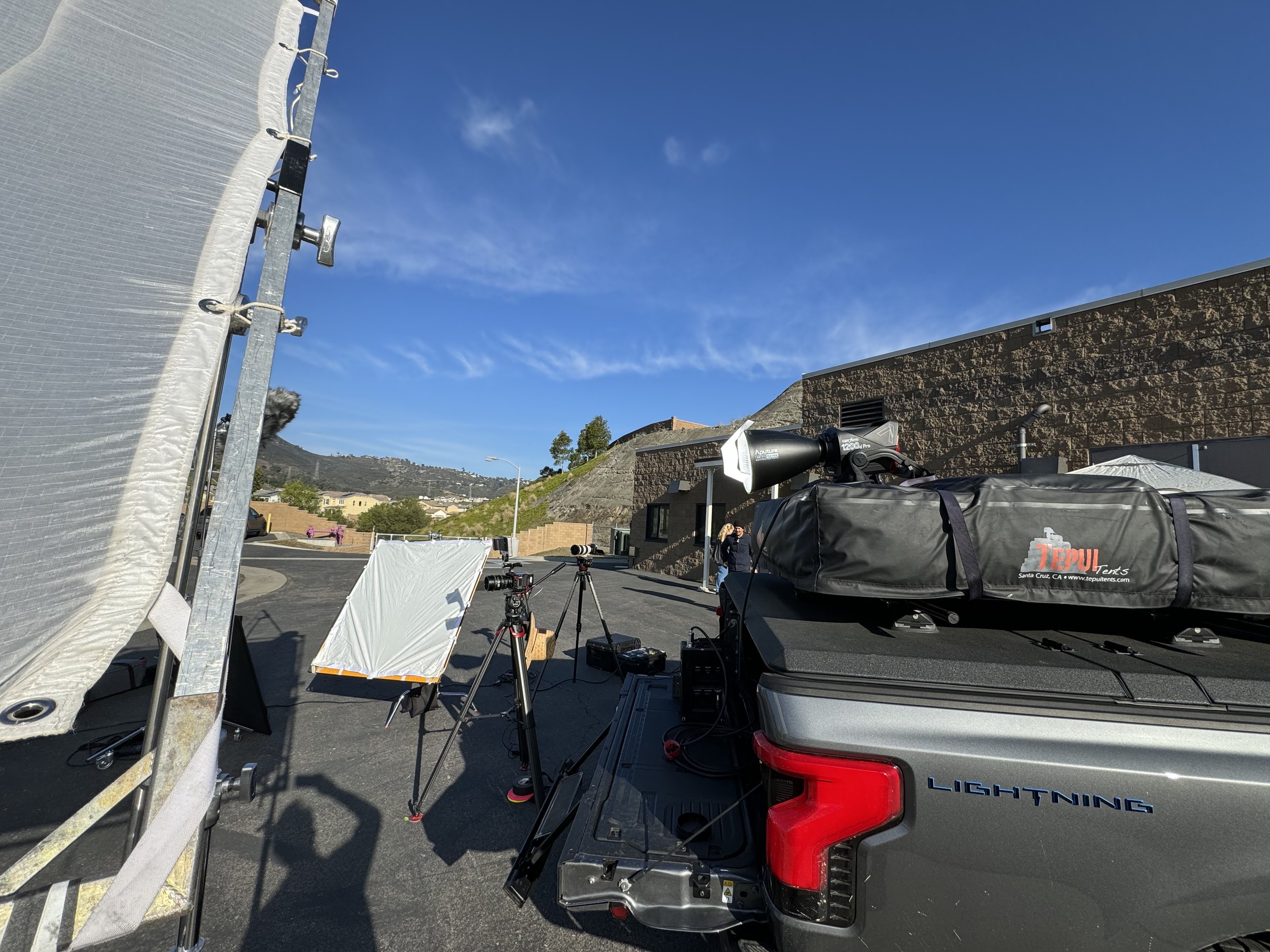All Electric Ford F-150 Lightning
Electric Vehicles or EV’s are gaining in popularity. You see them everywhere, especially if you live in California. Teslas are the new Toyota Camrys here and arguably are the future of transportation, but what you don’t see or at least on rare occasions are all electric heavy duty-vehicles. These heavy-duty, big box vehicles have yet to be adopted or even conceptualized, the 5-ton to 20-ton rigs that you would want to move your grip and lighting equipment around. But the EV genie is out of the bottle so-to-speak and it’s only a matter of time before there is a push to switch from the internal combustion variant to the all-electric kind. Let me lay a case for why the switch would be good for the industry.
One of the main reasons that many businesses are turning to electric vehicles, myself included, is their ability to reduce emissions. In video production, this is particularly important, as many productions involve the use of large trucks and other equipment that emit significant amounts of greenhouse gases (CO2). By using electric vehicles, video production companies can significantly reduce their carbon footprint and contribute to a cleaner, more sustainable future. But that was just one reason why I made the switch to an electric Ford F-150. For me here in San Diego, most of my jobs are less than 100 miles round-trip, and when I do need to go up to Los Angeles I can get there and back on a single charge. But as a production vehicle, it gets even better. Typical ICE vehicles lose efficiency when loaded up with heavy gear or equipment, electric vehicles don’t feel the weight as much as they do the aerodynamics or if they are pulling a trailer.
Netflix, one of the biggest streaming content studios has come out saying they are going to show more EVs in their TV shows. They even talk about on their podcast how EVs are going to be part of their sustainability efforts going forward.
Additionally, EVs can be charged using renewable energy sources such as solar or wind power, further reducing their environmental impact. This makes them an attractive option for video production companies that are looking to reduce their carbon footprint and promote sustainability.
Electric vehicles can also be used as filming vehicles, like my F-150 Lighting. For instance, electric drones can capture aerial footage for video productions, while electric motorcycles and scooters can be used to capture footage in hard-to-reach locations. Think about this, the F-150 Lighting can power an average house for three days imagine what it can power on a film set. It could be used for lighting, DIT, or a silent generator for video-village.
Using the Ford F-150 Lightning to power video production.
If all that wasn’t enough to convince you here are some additional benefits of using electric vehicles in video production:
• EVs are quieter than traditional gasoline-powered vehicles, which can be beneficial for filming in sensitive areas.
• EVs are easier to maintain than traditional gasoline-powered vehicles, which can save video production companies money in the long run.
• EVs are more reliable than traditional gasoline-powered vehicles, which can help to reduce downtime and keep productions on schedule.
If you are a video production company, I encourage you to consider using electric vehicles in your operations. EVs offer a number of advantages over traditional gasoline-powered vehicles, and they can help you to reduce your environmental impact and save money.






